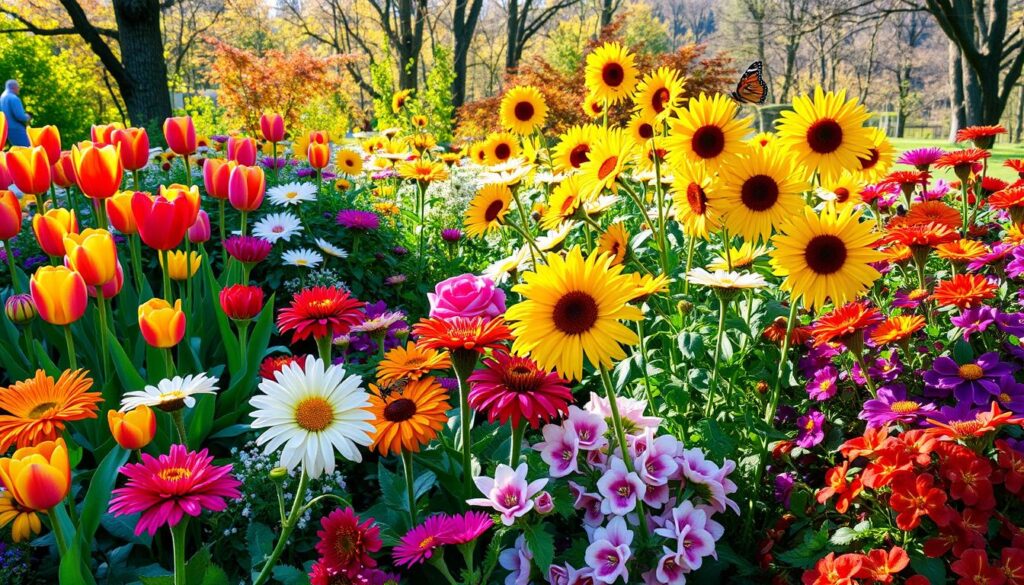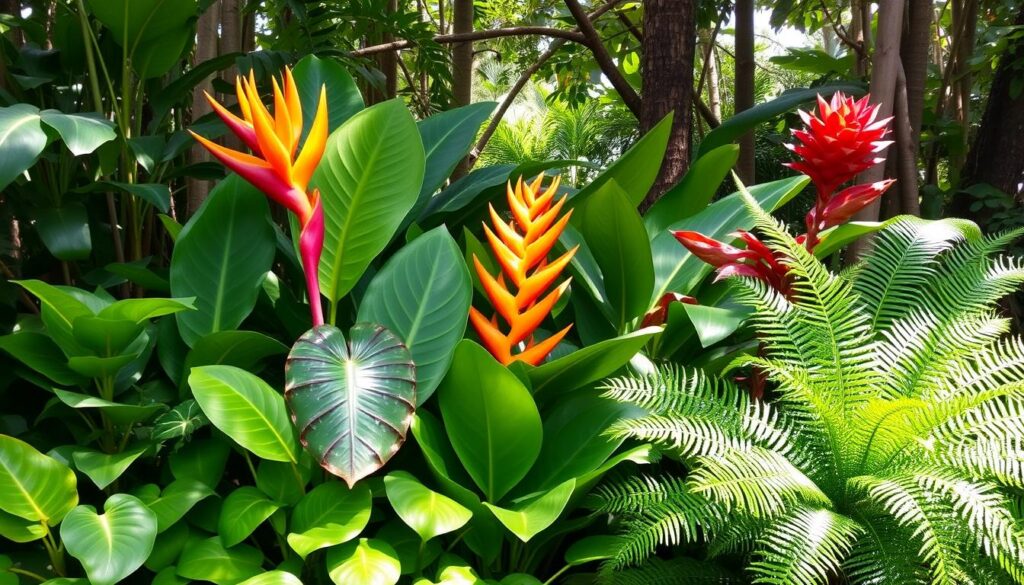Cultivating the Magnificent Southern Magnolia: A Step-by-Step Guide
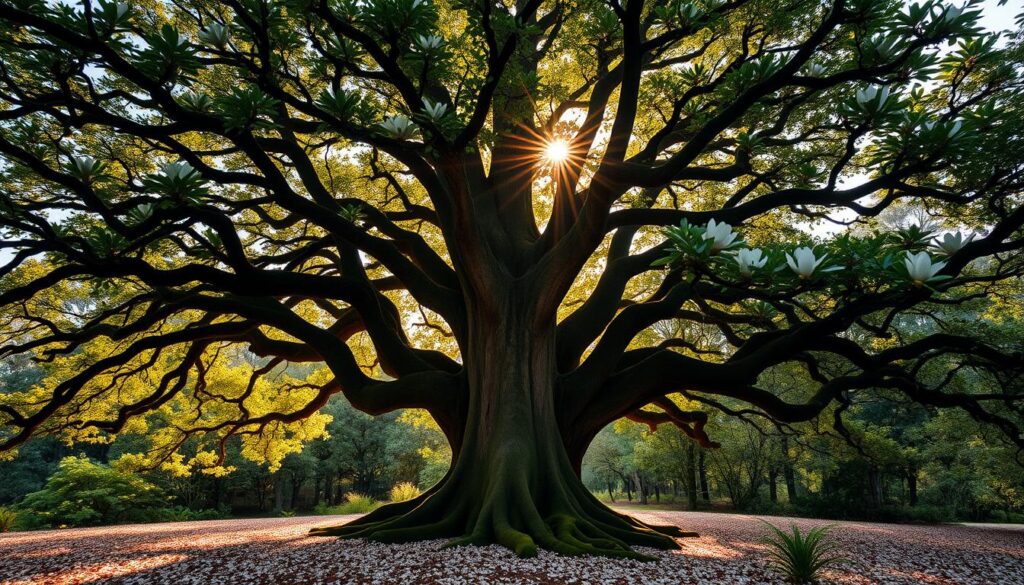
The Southern Magnolia, or magnolia grandiflora, is a stunning evergreen tree. It adds beauty and elegance to any landscape. Its fragrant flowers and attractive foliage make it a popular choice for gardening and landscaping.
This guide will show you how to cultivate this beautiful tree. We’ll cover planting, pruning, and pest management.
Imagine having a majestic Southern Magnolia tree in your backyard. Its large white flowers bloom in spring and summer, filling the air with a sweet fragrance. The evergreen leaves provide a year-round screen of glossy green foliage, making it perfect for landscaping.
Whether you’re a seasoned gardener or a beginner, this guide has everything you need. It will help you grow and care for your Southern Magnolia.
The Southern Magnolia is a low-maintenance tree that thrives in various conditions. It’s ideal for gardeners of all levels. With proper care, it can grow up to 80 feet tall, providing shade and beauty.
In this guide, we’ll cover everything you need to know. We’ll talk about planting, watering, pruning, and pest management. Follow these steps to cultivate a healthy and thriving Southern Magnolia.
Introduction to Southern Magnolia
The Southern Magnolia is a stunning ornamental tree known for its large, showy flowers and glossy leaves. It is native to the southeastern United States. This tree has been a favorite for landscaping because of its attractive foliage and beautiful blooms.
It has a rich history, loved by gardeners and nature lovers. Its large flowers and glossy leaves make it a top pick for ornamental use. The Southern Magnolia is not just beautiful; it also supports wildlife, making it great for creating a thriving ecosystem.
Origins and History
The Southern Magnolia has a long history, dating back to early American colonization. It has been grown for centuries, loved for its stunning flowers and foliage. As an ornamental tree, it’s used in many landscaping designs, from traditional gardens to modern urban spaces.
Characteristics and Features
The Southern Magnolia is famous for its large, showy flowers and glossy leaves. It’s a native tree that thrives in the southeastern United States. Whether standing alone or part of a larger design, it adds beauty and elegance.
| Characteristics | Features |
|---|---|
| Large, showy flowers | White, fragrant blooms |
| Glossy leaves | Dark green, oval-shaped foliage |
| Native to southeastern United States | Well-suited to warm, humid climates |
Benefits of Growing Southern Magnolia
Growing a Southern Magnolia can bring many benefits. It can make your home look better and provide shade. This tree is a symbol of the South, known for its beautiful flowers and leaves.
The flowers of the Southern Magnolia smell great and attract birds and bees. This makes it perfect for those who love wildlife in their garden.
The tree’s big leaves offer shade, which is great for landscaping. Its beauty and usefulness make it a favorite among homeowners. With its lovely flowers and leaves, it’s a wonderful addition to any yard.
Enhancing Curb Appeal
The Southern Magnolia’s flowers and leaves make your yard look elegant. Its large leaves and fragrant flowers add beauty to your property. This can increase your home’s value.
Providing Natural Shade
The Southern Magnolia’s leaves create natural shade. This is perfect for outdoor spaces. It makes your yard a cool and comfy place for activities.
Attracting Wildlife
The Southern Magnolia’s flowers attract birds and bees. Its flowers and leaves also offer food and shelter for wildlife. This makes it great for creating a wildlife-friendly yard.
| Benefits | Description |
|---|---|
| Enhancing Curb Appeal | The Southern Magnolia’s stunning flowers and attractive foliage make it a great choice for enhancing curb appeal. |
| Providing Natural Shade | The Southern Magnolia’s large leaves provide natural shade, making it an ideal choice for landscaping. |
| Attracting Wildlife | The Southern Magnolia’s fragrant flowers attract pollinators and other wildlife, making it a great choice for gardeners who want to attract birds and bees to their yard. |
Ideal Growing Conditions
The Southern Magnolia, an evergreen tree, loves certain conditions. It grows best in the southeastern United States climate. But, it can also thrive in other places with similar weather.
To help it grow well, it needs well-drained soil. It also prefers full sun to partial shade.
For more info on growing Southern Magnolia, check out the University of Georgia’s publication. It offers great tips on caring for this tree.
Soil Requirements
The best soil for a Southern Magnolia is rich in organic matter. It should have a pH between 6.0 and 7.0. This kind of soil supports the tree’s growth.
Sunlight Preference
The Southern Magnolia loves full sun to partial shade. It’s perfect for gardeners who want a beautiful, evergreen tree.
Climate Considerations
The tree likes a warm and humid climate, typical of its native area. But, with the right care, it can grow in other places too. This makes it a great choice for gardeners.
Planting Your Southern Magnolia
The Southern Magnolia is a top pick for gardeners looking to add elegance to their yard. It’s a symbol of beauty and strength in the South. To plant it, start by clearing the area and loosening the soil. This helps the roots grow deep and strong.
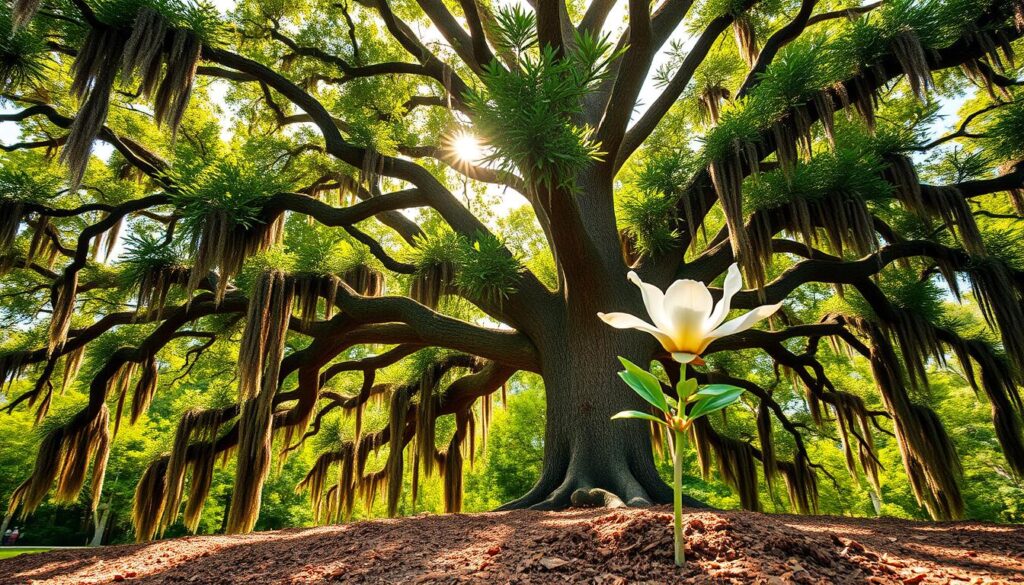
Plant it in the spring or fall for the best results. This lets the plant settle in before the hot summer or cold winter. Make sure to dig a hole that’s twice as wide and deep as the root ball. Follow these steps for a thriving Southern Magnolia in your garden.
Preparing the Site
Begin by removing debris like rocks and weeds. Then, loosen the soil to 12 inches deep. This lets the roots grow strong and deep.
Choosing the Right Time
Spring or fall are the best times to plant. The cooler weather helps the plant settle in before extreme temperatures.
Proper Planting Technique
Proper planting is key for a healthy Southern Magnolia. Dig a hole that’s twice as wide and deep as the root ball. Gently place the plant in the hole. Follow these steps for years of beauty from your Southern Magnolia.
| Planting Step | Description |
|---|---|
| Prepare the site | Remove debris and loosen soil to a depth of 12 inches |
| Choose the right time | Plant in the spring or fall, when the weather is cooler |
| Proper planting technique | Dig a hole twice as wide and as deep as the root ball, and gently place the plant in the hole |
Watering Practices
Watering your magnolia grandiflora right is key for its health and growth. This evergreen tree is famous for its beautiful flowers and shiny leaves. In its first year, it needs steady moisture to grow strong roots.
Water it often, aiming for about 1 inch of water each week. You can use rainwater and irrigation together. Change how often you water based on the season.
Establishing a Baseline
To find out when to water, check the soil moisture. Stick your finger into the soil up to the knuckle. If it’s dry, it’s time to water. If it’s moist, wait a bit longer.
Seasonal Watering Needs
The seasons change, so does your magnolia’s water needs. In spring and summer, it needs more water. In fall and winter, it needs less. Watch the weather and adjust your watering.
Signs of Over or Under-Watering
Know the signs of too much or too little water. Yellow or dropping leaves mean too much water. Wilting or brown leaves mean not enough water.
Mulching and Fertilizing
Mulching is a simple yet effective way to promote healthy growth in your Southern Magnolia. This ornamental tree is known for its stunning flowers and dark green leaves. Mulch retains moisture and suppresses weeds, creating an ideal environment for your tree to thrive.
As a native tree in the southeastern United States, the Southern Magnolia benefits from mulching. It reduces soil temperature and prevents moisture loss.
When it comes to fertilizing your Southern Magnolia, selecting the right fertilizer is crucial. A balanced, slow-release fertilizer specifically formulated for trees is the best choice. Apply the fertilizer during the growing season to provide your tree with the necessary nutrients for healthy growth.
Benefits of Mulching
Mulching offers several benefits for your Southern Magnolia. It reduces soil erosion and improves soil structure. By choosing the right type of mulch, you can create a beautiful and functional landscape that showcases your ornamental tree.
Selecting the Right Fertilizer
When selecting a fertilizer for your Southern Magnolia, consider a native tree’s specific needs. Look for a fertilizer that is rich in nutrients and designed for use on trees. Apply it according to the manufacturer’s instructions.
Pruning Techniques
Pruning a Southern Magnolia is a delicate task, especially when it comes to its fragrant flowers. This southern symbol is known for its stunning blooms. Pruning helps keep its shape and promotes healthy growth.
The best time to prune a Southern Magnolia is in late winter or early spring. This is before new growth starts. It allows for removing dead or damaged branches and keeps the tree’s natural shape.
Tools Needed for Pruning
To prune a Southern Magnolia, you’ll need pruning shears, loppers, and a saw. These tools help remove dead or damaged branches. They also help shape the tree as you like.
Steps for Effective Pruning
When pruning a Southern Magnolia, follow a few simple steps. First, remove dead or damaged branches to stop disease spread. Next, cut back overgrown branches to keep the tree’s shape and encourage healthy growth. Finally, step back and enjoy your work. Admire the beauty of your fragrant flowers and the southern symbol that is your Southern Magnolia.
| Tool | Description |
|---|---|
| Pruning Shears | Used for cutting small branches and shaping the tree |
| Loppers | Used for cutting larger branches and removing dead or damaged wood |
| Saw | Used for cutting thick branches and removing heavy wood |
Pest and Disease Management
The Southern Magnolia is a stunning evergreen tree and a favorite in landscaping. But, it needs the right care to avoid pests and diseases. Regular checks and upkeep can spot problems early.
Aphids and scale are pests that harm the Southern Magnolia. They damage its leaves and flowers. Keeping the area clean and removing sick leaves or branches is key.
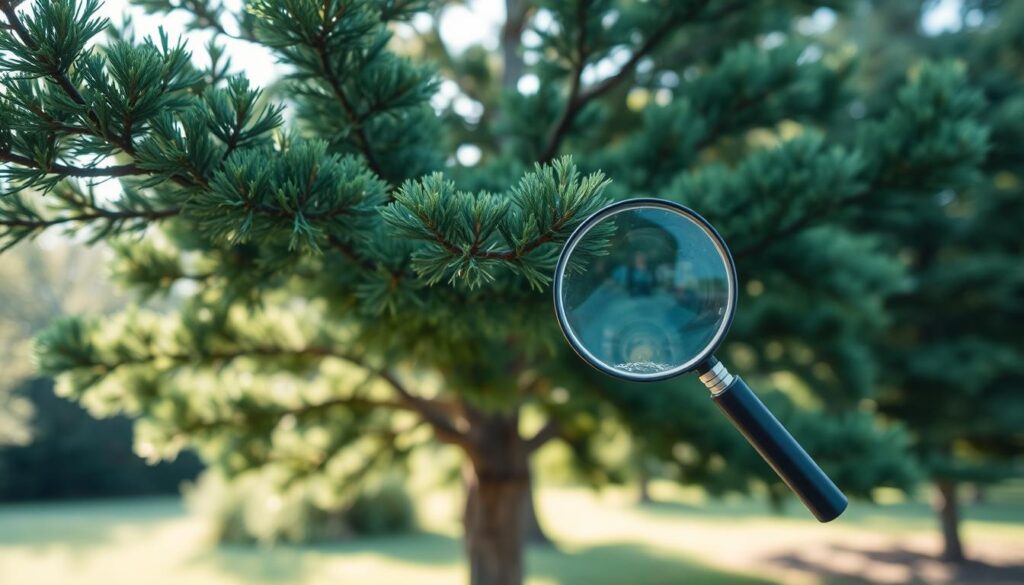
Common Pests Affecting Southern Magnolia
Aphids and scale are the main pests for the Southern Magnolia. Organic solutions like neem oil and insecticidal soap can help control them.
Signs of Disease
The Southern Magnolia can also get diseases like root rot and leaf spot. Look out for yellow leaves, black spots, and a soft trunk.
Organic Control Methods
Neem oil and insecticidal soap are good for fighting pests and diseases. Keeping the area clean and removing sick parts also helps. This keeps the Southern Magnolia healthy and beautiful in your garden.
Seasonal Care Tips
To keep your Southern Magnolia, also known as magnolia grandiflora, thriving, it’s essential to provide seasonal care. This tree, a southern symbol, needs attention at different times of the year. In the spring, preparing your tree for the growing season is crucial.
This involves applying a balanced fertilizer to promote healthy growth. Prune any dead or damaged branches to prevent disease.
Spring Preparations
In the spring, inspect your tree for any signs of pest or disease damage. Regular maintenance, such as watering and mulching, can help prevent these issues. As your tree grows, it will become a stunning southern symbol, providing shade and beauty to your landscape.
Summer Maintenance
In the summer, your magnolia grandiflora will require regular watering to ensure it receives enough moisture. It’s also important to provide full sun to partial shade, depending on your tree’s specific needs. By following these seasonal care tips, you can enjoy your Southern Magnolia for years to come, and it will remain a vibrant southern symbol in your garden.
| Season | Care Tips |
|---|---|
| Spring | Apply balanced fertilizer, prune dead or damaged branches |
| Summer | Water regularly, provide full sun to partial shade |
| Fall | Clean up debris, apply layer of mulch |
Fall Cleanup
Finally, in the fall, it’s essential to clean up any debris and prepare your tree for the winter months. This includes applying a layer of mulch to protect the roots and retain moisture. By following these seasonal care tips, you can keep your Southern Magnolia healthy and thriving, and it will continue to be a beautiful southern symbol in your landscape.
Propagating Southern Magnolia
The Southern Magnolia is a stunning ornamental tree loved for landscaping. It’s native to the southeastern United States. Propagating it is rewarding, letting you share it with others.
There are several ways to propagate a Southern Magnolia. You can use seed propagation, cutting techniques, or layering. Each method has its own benefits and needs careful attention.
Seed Propagation
Seed propagation starts with planting seeds in a seed tray. It needs specific temperatures and humidity to germinate. This method can be a bit tricky.
Cutting Techniques
Cutting techniques involve taking cuttings from a mature tree. These cuttings are rooted in a pot. It’s often more successful because the cuttings come from healthy branches.
Layering Method
The layering method bends a branch down to the ground. It roots before being cut from the parent tree. This method takes longer but creates a tree with a strong root system.
By using these methods and giving the right care, you can grow a Southern Magnolia. Whether you choose seed propagation, cutting techniques, or layering, you’ll enjoy its beauty. You’ll also be able to share this stunning native tree with others.
| Propagation Method | Description |
|---|---|
| Seed Propagation | Planting seeds in a seed tray and providing necessary conditions for germination |
| Cutting Techniques | Taking cuttings from a mature tree and rooting them in a pot |
| Layering Method | Bending a branch down to the ground and allowing it to root before cutting from the parent tree |
Landscaping Ideas with Southern Magnolia
The Southern Magnolia is a versatile tree perfect for many landscaping designs. It adds elegance to any yard. Known as a southern symbol, it boasts stunning
There are many ways to landscape with a Southern Magnolia. Pair it with azaleas and gardenias for a fragrant garden. These plants enhance the yard’s beauty and offer a pleasant scent.
Complementing Other Plants
Pair the Southern Magnolia with various plants for a unique landscape. Choose plants that match its growing conditions and care needs. This way, you’ll have a thriving and beautiful garden.
Incorporating into Garden Designs
The Southern Magnolia fits both formal and informal garden designs. Its flowers and foliage make it a standout in any garden. It’s ideal for gardeners with different styles.
Using Southern Magnolia in Urban Settings
The Southern Magnolia is also great for urban areas like parks and streetscapes. It provides shade and beauty. As a southern symbol, it adds elegance to cities.
Conclusion: Enjoying Your Southern Magnolia
Starting your journey with the Southern Magnolia? The secret to enjoying it for years is to care for it well and avoid common mistakes. This evergreen tree is easy to maintain and can beautify your yard for years.
Tips for Long-Term Care
For your Southern Magnolia to flourish, water it often, especially when it’s dry. Feed it a balanced fertilizer in early spring. Prune it carefully to keep its shape and remove dead branches. These steps will help your tree grow strong and beautiful.
Final Thoughts
The Southern Magnolia is a true treasure among evergreen trees. It offers beauty all year, natural shade, and a home for wildlife. By following this guide, you can enjoy this magnificent tree in your backyard. Your landscape will be stunning and peaceful, admired by all.
